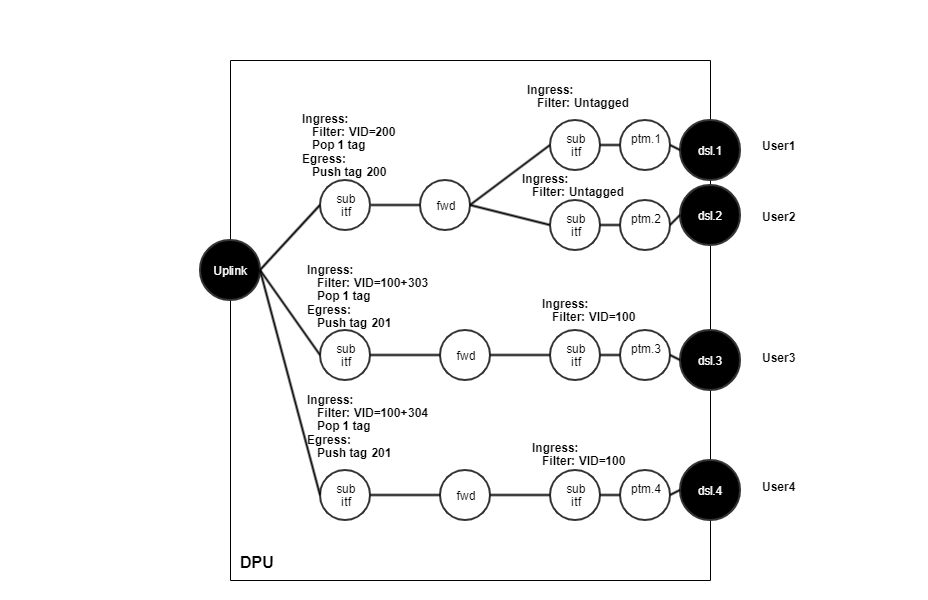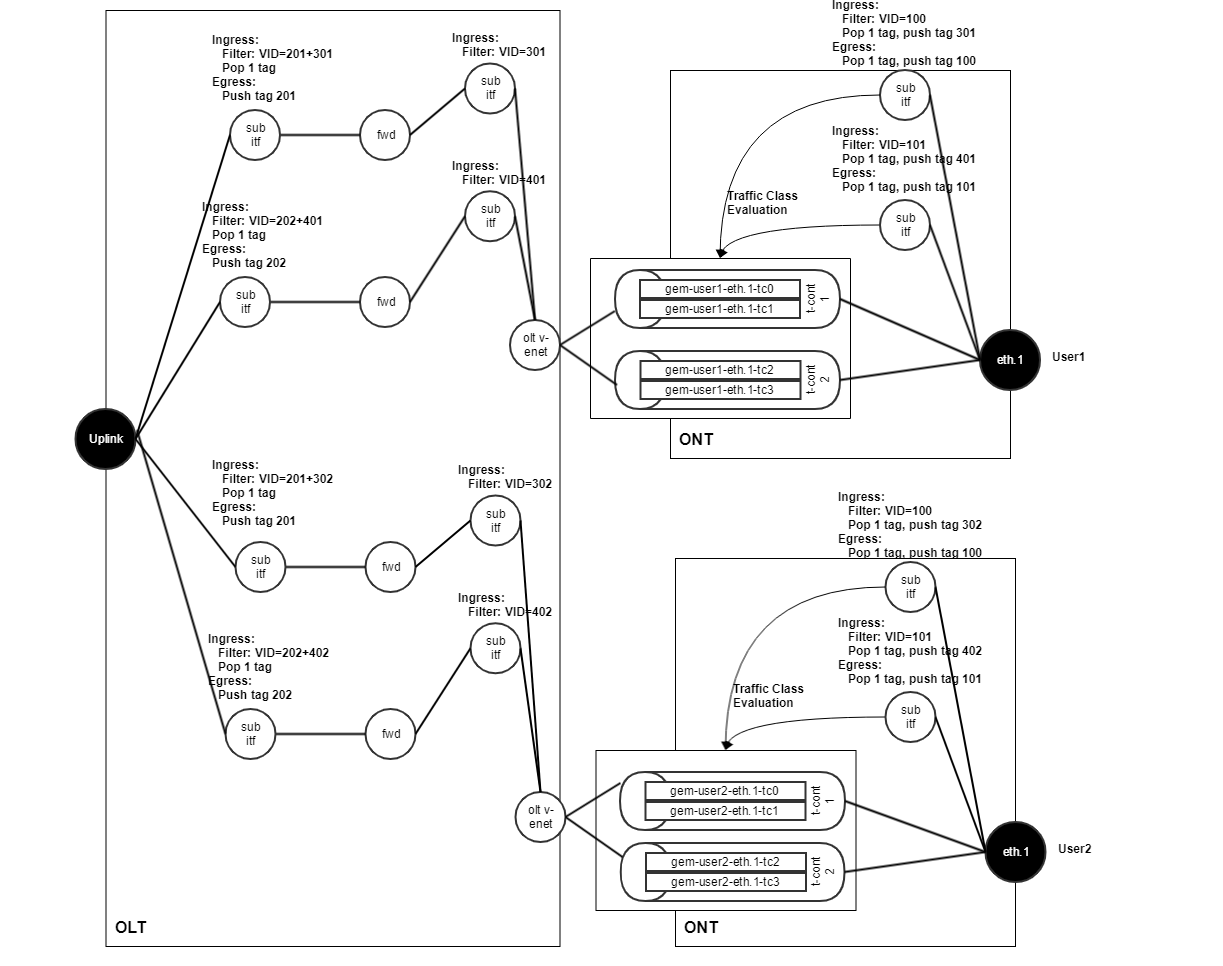Examples for Configuring Access Nodes
The OB-BAA distribution includes standard device adapters (SDA) for OLTs and DPUs along with a set of examples on how to configure those devices using a NETCONF client.
The examples described in this section of the document can be found in the resources/examples/dpu-config and resources/examples/olt-config directories of the OB-BAA source code distribution.
The BAA layers NAI uses standard's based YANG models for configuring the Access Nodes.
For configuration of OLTs and DPUs the following YANG modules are important:
- TR-355 - YANG Modules for FTTdp Management
- TR-383 - Common YANG Modules for Access Network
- TR-385 - ITU-T PON YANG Modules
DPU Configuration
The DPU configuration examples are located in resources/examples/dpu-config and consist on the following steps:
-
Create a DPU using the DPU SDA
-
Add interfaces
-
Configure N:1 services
-
Configure 1:1 services
-
Configure and apply G.fast profiles
The following figure summarizes the VLAN operations configured in step 3 and 4:

Legend:
-
sub itf - TR-383 sub-interface
-
fwd - TR-383 forwarder
Info: the forwarder ports were omitted since they have a 1:1 relationship to the sub-interface
-
ptm - Packet Transfer Mode Interface
-
dsl - DSL interface
OLT Configuration
The OLT configuration examples are located in resources/examples/olt-config.
This section of the documents provides a examples of how to configure the OLT using either:
-
1:1 Services: Each ONU LAN sub-interface has a corresponding OLT WAN sub-interface
-
N:1 Services: Multiple ONU LAN sub-interfaces use the same OLT WAN sub-interface
Configure OLT for 1:1 Services
The first OLT configuration example consists on the following steps:
-
Create an OLT using the OLT SDA
-
Add the OLT and ONU interfaces. This includes the vANI and OLT-vENET interfaces. Please refer to TR-385 for additional information.
-
Populate the TR-385 link table
-
Create TR-383 QoS Classifiers
-
Create TR-383 sub-interfaces on the ONT ports
-
Create GEM ports and T-CONTs
-
Configure a 1:1 services
The following figure summarizes the operations configured in step 5,6 and 7:

Legend:
-
sub itf - TR-383 sub-interface
-
fwd - TR-383 Forwarder. Note: the forwarder ports were omitted since they have a 1:1 relationship to the sub-interface
-
eth - Ethernet Interface
Configure OLT for N:1 services
The second OLT configuration example consists on the following steps:
-
Create an OLT using the standard OLT adapter
-
Add the OLT and ONU interfaces. This includes the vANI and OLT-vENET interfaces. Please refer to TR-385 for additional information.
-
Populate the TR-385 link table.
-
Create TR-383 QoS Classifiers
-
Create TR-383 sub-interfaces on the ONT ports
-
Create GEM ports and T-CONTs
-
Configure a N:1 service
The following figure summarizes the operations configured in step 5,6 and 7:

Legend:
-
sub itf - TR-383 sub-interface
-
fwd - TR-383 Forwarder
Info: the forwarder ports were omitted since they have a 1:1 relationship to the sub-interface
-
eth - Ethernet interface
Performance collection configuration
An example for configuring an IPFIX exporting process on an access node is provided in resources/examples/requests/ipfix-configuration-example.xml. To run the example, it is assumed that a device named deviceA with an interface called eth0 is already created.
